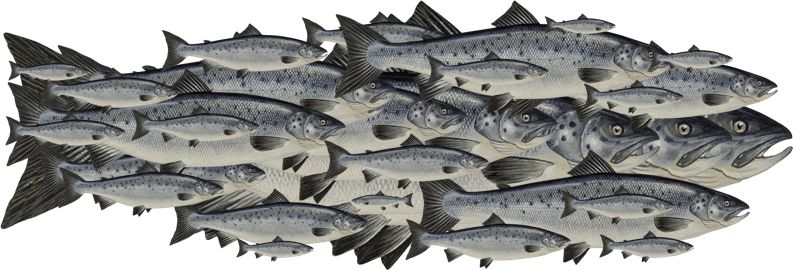Salmons Too
May 2, 2021
Most of us presume growth of body length in vertebrates to be unidirectional, with organisms progressively increasing in body size as they become older. However, under challenging environmental conditions for some vertebrates body length shrinkage is also possible. This ability is called the Dehnel phenomenon. Small mammals, such as insectivorous shrews, show body length shrinkage of up to 7%, while their skulls can shrink up to 20% and loss of mass of up to 35% in anticipation of winter. The ectothermic Marine iguanas living in the Galapagos archipelago can shrink as much as 20% of their body length when food availability dramatically decreases. The dynamics of the growth in length of these animals can be explained by a combination of anorectic stress and environmental conditions. According to research by the University of Oulu and the Finnish Game and Fisheries Research Institute young salmon have a similar ability to shrink. In examining in 2010 how juvenile salmonid fish responded to harsh environmental conditions, the researchers were faced with unexpected and previously undocumented observations, indicating that young salmonids shrink up to 10% of the body length, over the course of winter.
The Incredible Shrinking Man continues to collect stories like this to resist the prevailing idea that shrinkage is an unnatural movement. That it goes against some higher principle of growth. Shrinking is not and it does not, neither in the body, nor in nature, nor in culture.